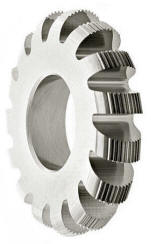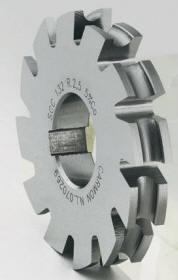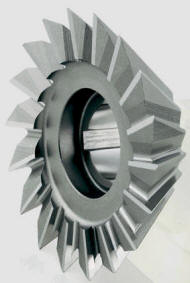|
|
|
|
|
Typical form cutters
| T-slot cutter | Dovetail cutter | Ball nose cutter |
|
Groove or slot milling is an operation in which side and face milling is often preferred to end milling. Slots or grooves can be short or long, closed or open, straight or non-straight, deep or shallow, wide or narrow.
|
While they are specialty tools, dovetail style cutters have a broad range of applications. Dovetails are typically used to cut O-ring grooves in fluid and pressure devices, industrial slides and detailed undercutting work. Dovetail cutters have a trapezoidal shape like the shape of a dove's tail. |
Ball end mills, also known as ball nose end mills, are used for milling contoured surfaces, slotting and pocketing. A ball end mill is constructed of a round cutting edge and used in the machining of dies and moulds.
|
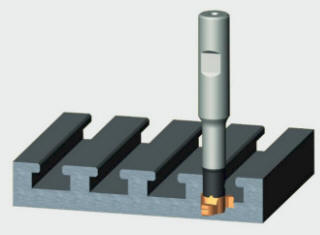 |
 |
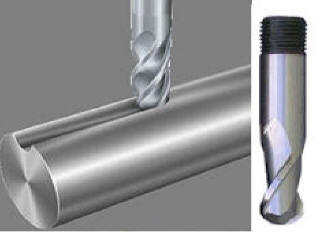 |

